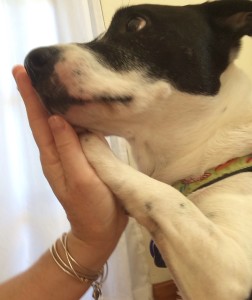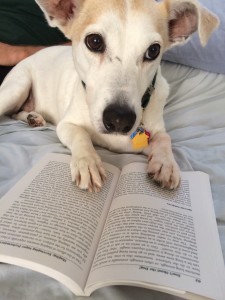But It Works? Ethics in Positive vs Correction Based Training
Day NINETEEN-21 Day Positive Training Kickstart Challenge
According to Victoria Stilwell (television celebrity & positive reinforcement trainer), “As it turns out, it’s scientifically sound advice to be nice to your dog.” This is great news!
Educating & training learners is most definitely one area where the end does not justify the means. This is true especially when there are better, more effective, ethical means to reach your goal. So, the fact that science & behavioral experts also concur that the best methodology is to positively reinforce behaviors makes it a win/win situation & the choice easy.
 The question for some folks comes in via the fact that punishment does work. However, it only works to suppress behavior. It does not work to change behavior, nor does it instruct the learner what you want them TO do.
The question for some folks comes in via the fact that punishment does work. However, it only works to suppress behavior. It does not work to change behavior, nor does it instruct the learner what you want them TO do.
In addition, in order for the punishment approach to continue to function, it must continue to escalate. Moreover, it is reinforcing to the punisher, which is a dangerous slippery slope. Punishment/correction serves to increase aggression, increase apathy, increase escape/avoidance tendencies, & increase generalized fear.
Fortunately, reward based training has none of the above side effects. Instead, we can foster relationships built on trust & love rather than fear & dominance. Which, ultimately, works much better!
ACTION: Think about a time when you may have corrected (even saying, “No!”) or punished your dog. Now consider the evidence. Did this behavior stop for ever & ever? Did you ever have to repeat this punishment/correction (thus it was ineffective)? Now think about-even try this part out!-how you could instead look for some behavior to reinforce? Good luck building up that relationship!


